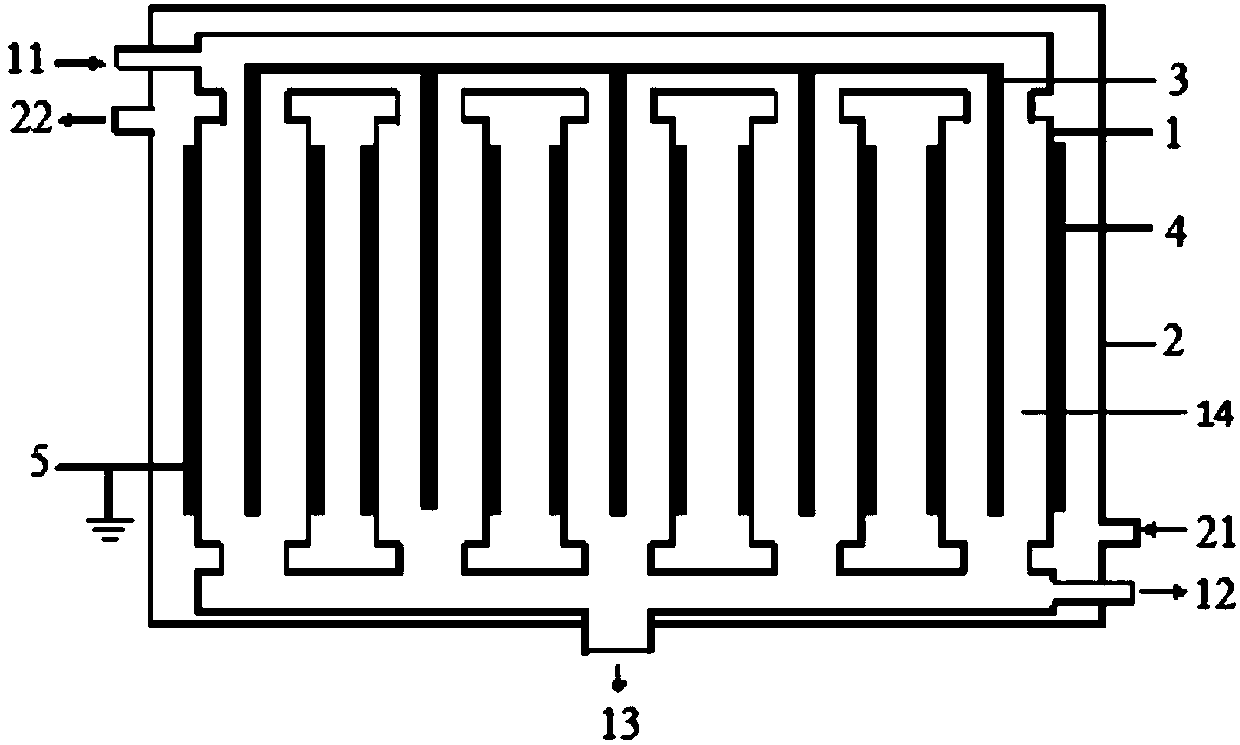High-throughput low-temperature plasma reactor and method for decomposing hydrogen sulfide
A low-temperature plasma and reactor technology, applied in the field of plasma chemistry, can solve the problems of high hydrogen sulfide decomposition conversion rate and uneven discharge, and achieve the effect of low decomposition energy consumption and high conversion rate decomposition
- Summary
- Abstract
- Description
- Claims
- Application Information
AI Technical Summary
Problems solved by technology
Method used
Image
Examples
specific Embodiment approach
[0098]Nitrogen gas is introduced into the inner barrel of the high-flux low-temperature plasma reactor from the reactor inlet to remove the air in the discharge area, and the gas is drawn out from the product outlet. At the same time, the heat transfer medium is introduced into the outer cylinder from the heat transfer medium inlet, and the introduced heat transfer medium is led out from the heat transfer medium outlet. The temperature of the heat transfer medium is maintained at the temperature required by the system reaction. Then feed raw material gas containing hydrogen sulfide from the reactor inlet to the inner cylinder of the high-throughput low-temperature plasma reactor, and the raw material gas fills each reaction tube. A plasma discharge field is formed between the central high voltage electrode and the ground electrode. The hydrogen sulfide gas is ionized in the discharge area and decomposed into hydrogen and elemental sulfur. The elemental sulfur produced by the ...
Embodiment 1
[0109] use figure 1 The shown high-flux low-temperature plasma reactor performs hydrogen sulfide decomposition reaction. The specific structure and structural parameters of the high-flux low-temperature plasma reactor are as follows:
[0110] The reactor includes:
[0111] An inner cylinder, the inner cylinder is respectively provided with a reactor inlet, a gas product outlet and a liquid product outlet, and the inner cylinder contains 4 reaction tubes arranged side by side, and the top and bottom of each of the reaction tubes communicate with each other respectively , so that the raw materials entering by the reactor inlet can enter into each of the reaction tubes respectively, and the gaseous products produced in each of the reaction tubes can be drawn out from the gas product outlet, and each of the reaction tubes The liquid product produced in the reaction tube can be drawn out from the liquid product outlet, the size of the four reaction tubes is exactly the same, all t...
Embodiment 2
[0141] In this embodiment, a high-throughput low-temperature plasma reactor similar to that of Embodiment 1 is used to carry out the decomposition reaction of hydrogen sulfide. The difference is that in this embodiment:
[0142] All side walls of the inner cylinder are formed by grounding electrodes, and the material for forming the grounding electrodes is stainless steel metal foil;
[0143] The blocking medium is arranged around the inner wall of the inner cylinder;
[0144] The distance L between the outer wall of the central high-voltage electrode and the inner wall of the barrier medium 1 with the thickness of the barrier dielectric D 1 The ratio is 18:1;
[0145] h 1 and the length L of the discharge region containing the barrier dielectric 2 The proportional relationship between is: H 1 :L 2 =1:95.
[0146] In this embodiment, H is passed from the reactor inlet to the inner cylinder of the high-throughput low-temperature plasma reactor. 2S / Ar mixed gas, where H ...
PUM
 Login to View More
Login to View More Abstract
Description
Claims
Application Information
 Login to View More
Login to View More - R&D
- Intellectual Property
- Life Sciences
- Materials
- Tech Scout
- Unparalleled Data Quality
- Higher Quality Content
- 60% Fewer Hallucinations
Browse by: Latest US Patents, China's latest patents, Technical Efficacy Thesaurus, Application Domain, Technology Topic, Popular Technical Reports.
© 2025 PatSnap. All rights reserved.Legal|Privacy policy|Modern Slavery Act Transparency Statement|Sitemap|About US| Contact US: help@patsnap.com

